In the Sirenomelia it is a malformation of the lower half of the fetus, beginning with the pelvic area and ending with the feet. She will too Symmetry, Sympody or simply Mermaid Syndrome called. The ICD-10 classification is Q47.8.
What is a siren omelia?

© Björn Wylezich - stock.adobe.com
A Sirenomelia is characterized by a deformation of the legs and feet. Depending on the severity of the sirenomelia, these are only rudimentary and have grown together. The fusion extends not only to the soft parts but also to the bones, insofar as they were formed at all.
The resulting conical shape of the lower body is reminiscent of siren fish tails. These mermaid-like figures from Greek mythology were therefore also the basis for the naming of the Sirenomelia. In earlier times it was even directly from one Siren malformation spoken.
The occurrence of a sirenomelia is very rare and only happens sporadically. A little more than 450 cases are known worldwide to date. The probability of illness is 1 in 100,000. There are currently two people living with a siren omelia. They are two girls from the United States and Peru. According to studies, however, there is generally a small excess of male patients.
causes
Despite intensive research, the cause of sirenomelia is still unknown. Various theories have been voiced over the years. So far, no clear evidence has been provided. In the early days of sirenomelia research, internal and external mechanical influences, such as pressure exerted on the amniotic fold, were suspected. Disturbances in embryonic development were later discussed.
Theories included, for example, a developmental disorder of the cloaca, aplasia or dysplasia of the pelvis and sacrum or an overstretching of the neural tube. In the meantime, an interplay of several factors is being discussed. Most likely, however, a genetic cause currently appears. An existing sirenomelia gene has already been excluded.
In addition, some animal experiments were carried out to clarify the triggering cause. Methods based on genetics and teratogenic substances such as cadmium and lead were used. Amazingly, sirenomelia could be induced using these methods. The changes in animals were largely similar to those in humans. However, there was also no clear explanation for the origin of the sirenomelia.
Symptoms, ailments & signs
Sirenomelia develops in the womb. Indications as to whether or from when the adhesions and deformations of the lower half of the body can already be recognized with the help of ultrasound could not be found. In any case, evaluations regarding the mothers are very limited.
But there is talk of an insufficient amount of amniotic fluid, a change in the placenta and changes in the umbilical cord.
Almost two-thirds of sirenomelia fetuses are stillborn. Most of the remaining children are born prematurely and are barely viable afterwards. They die within a few hours or days.
Often other malformations also occur. Renal agenesis, Potter-face, vertebral anomalies, scoliosis, pulmonary hypoplasia, multiple cardiovascular anomalies and anorectal atresia were not infrequently observed. Furthermore, the external genital organs are largely non-existent and only a single umbilical artery is present.
Diagnosis & course of disease
The diagnosis is made after the birth at the latest. A specialist examination determines whether there is actually a sirenomelia, i.e. a deformation of both extremities and a definite cohesion. If this is not the case, one speaks only of sirenoid malformations or pseudosirens. Incidentally, humans are the only mammals in whom sirenomelia occurs spontaneously.
Complications
In sirenomelia, the unborn child suffers from severe malformations. The symptoms can usually be diagnosed before birth. Above all, the parents and relatives of the child suffer from psychological complaints or depression. As a rule, the sirenomelia leads to the death of the person concerned and thus to a stillbirth.
If the child is born alive, it will often die a few days after birth of the malformations. The children suffer from malformations of the internal organs and also from malformations of the face. The heart is also severely affected by the deformities. Furthermore, in most cases the child's sex organs are either absent or only very slightly developed.
In most cases, the treatment of sirenomelia is based on the psychological complaints of the parents and relatives. The child's life can no longer be saved. The parents are dependent on psychological treatment. In most cases, complications can be avoided with early treatment.
When should you go to the doctor?
In any case, treatment by a doctor is necessary and sensible for a siren melie. Since this disease is hereditary, it cannot heal itself. In order to prevent the disease from being passed on to descendants, genetic counseling should be carried out if children are desired. A doctor should be consulted in the case of sirenomelia if there are severe malformations or deformities on the child's body.
In most cases, these symptoms can be discovered before birth by an examination with the ultrasound, so that a subsequent diagnosis is no longer necessary. In most cases, the child dies after the birth, so no further treatment takes place. Since sirenomelia can lead to severe psychological complaints or to moods and depression in parents and relatives, psychological treatment should also be sought. In many cases, contact with other affected parents of the sirenomelia is also useful and can alleviate symptoms.
Therapy & Treatment
Treatment of sirenomelia per se is not possible. If a child survives birth, further survival depends on the type and severity of other existing malformations. Above all, the functionality of the internal organs is important. The cases already mentioned in the USA and Peru show that a life with a mild form of sirenomelia is possible.
Sirenomelia is classified into three degrees of severity. Geoffroy Saint-Hilaire made this classification for the first time in the 19th century and spoke of Symméle, Uroméle and Sirénoméle. The Würzburg pathologist August Förster revised them again and precisely defined today's subspecies.
- The easiest form of sirenomelia will be Sympus dipus called. In this type, the legs are completely fused together. In addition, two feet are clearly recognizable or present.
- If the typically conical siren's abdomen ends with only one foot, it is Sympus monopus, the moderate form of sirenomelia. The existing foot usually points backwards.
- In the heaviest form Sympus apus, the thighs are fused together. The rest of the legs are deformed and bend forward. Feet are also completely absent at the beginning.
Basically, the pelvis and lumbar spine are also affected, to a greater or lesser extent, in all three subspecies. Especially in the pelvis, the deformations often occur on one side, creating an asymmetrical shape.
prevention
According to the current state of knowledge, there are no prevention options. If a severe form of sirenomelia is diagnosed in good time, only termination of pregnancy appears to be sensible. It can be assumed that further research on sirenomelia will be carried out despite the low number of cases.
The main focus could be on twin research. The likelihood of twin birth and sirenomelia occurring at the same time is significantly increased. For the most part, only one twin is affected.
Aftercare
Follow-up care for a sirenomelia includes regular physical exams and discussions with doctors and therapists. The measures that make sense in detail depend on the shape of the sirenomelia. For sympus dipus, the mildest form of sirenomelia, physiotherapeutic measures can be part of the aftercare. Most patients must take pain medication, blood thinners, and other medicines.
The use of the preparations must be monitored by a doctor. The medication must be reset at regular intervals. After corrective surgery, the patient has to spend a few days in the hospital. Long-term follow-up care is indicated for sympus monopus, the moderate form. The patients need support in everyday life, as the severe malformations prevent them from moving independently.
Medication and physiotherapy are also part of the follow-up care for Sympus monopus. As a rule, the patients and their relatives also receive psychological support. With Sympus apus, the most severe form, the life expectancy of the patient is significantly reduced.
Most patients die before or shortly after birth. Follow-up care is usually limited to psychological support for relatives. Aftercare for a sirenomelia is carried out by general practitioners, orthopedists and, depending on the symptoms, other specialists.
You can do that yourself
Around 70 percent of children with sirenomelia die in the mother's womb. Another large part dies immediately after birth or in the first days and weeks. Parents need to deal early with the thought that the child may die. If necessary, a therapist should be called in to take over the grief counseling of the parents. Which measures make sense in detail depends on the individual course of the disease.
The parents of a sick child are best to talk to their family doctor or a therapist about further measures. Since sirenomelia is an extremely rare disease, the exact measures must be determined in a specialist clinic. Parents should contact the appropriate doctor at an early stage.
If the condition turns out to be positive, the necessary measures must be taken to enable the child to live as symptom-free as possible. In addition to purchasing aids such as wheelchairs and crutches at an early stage, this also includes contacting the health insurance company so that the costs can be covered.

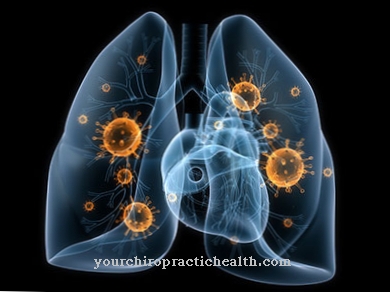

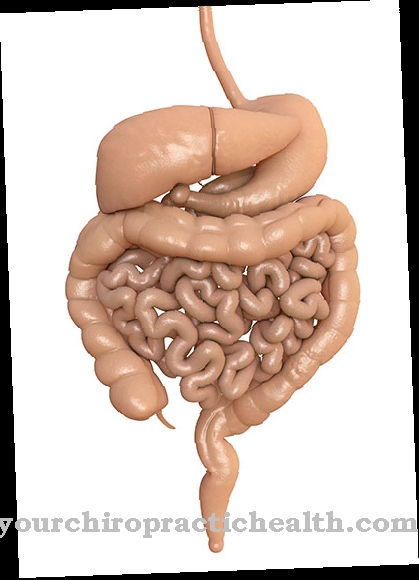
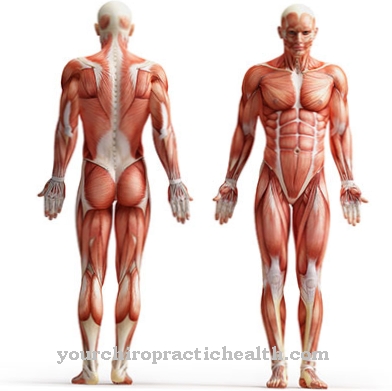
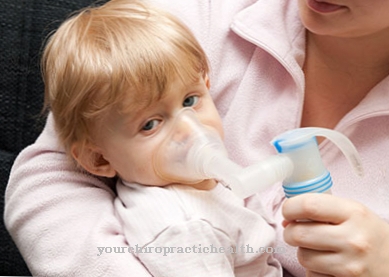
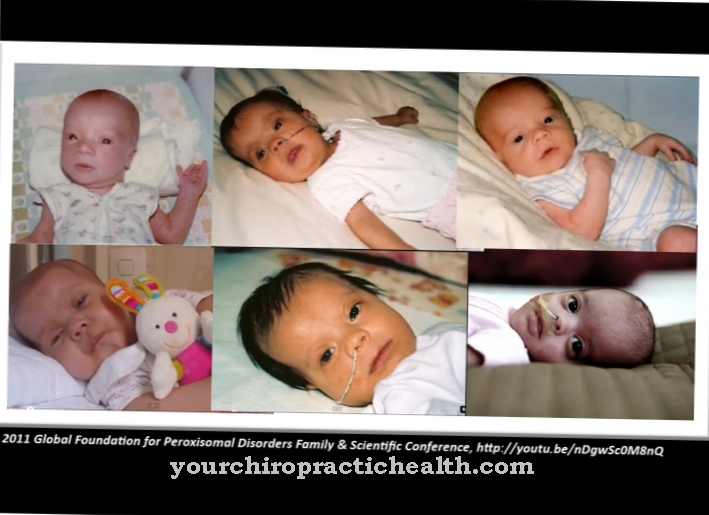

















.jpg)



